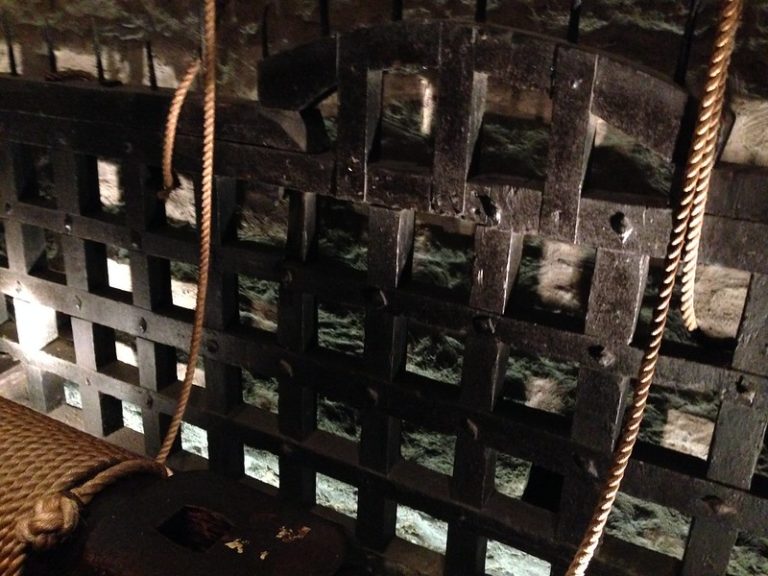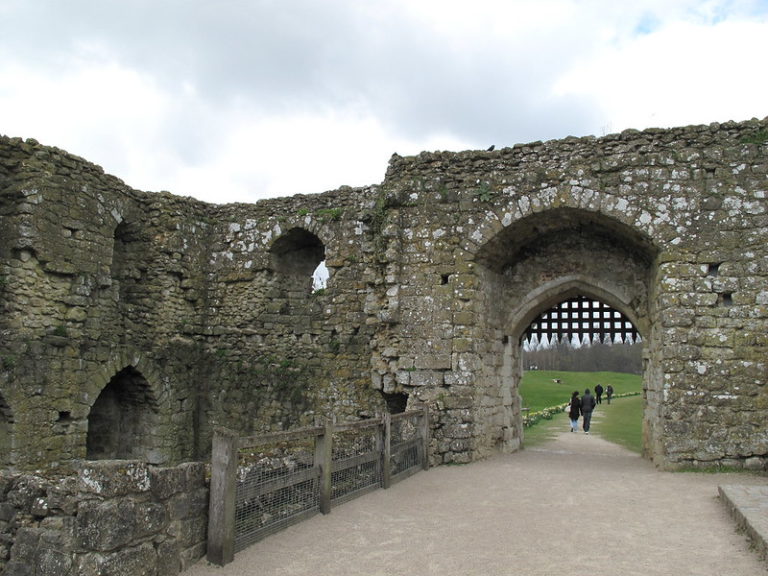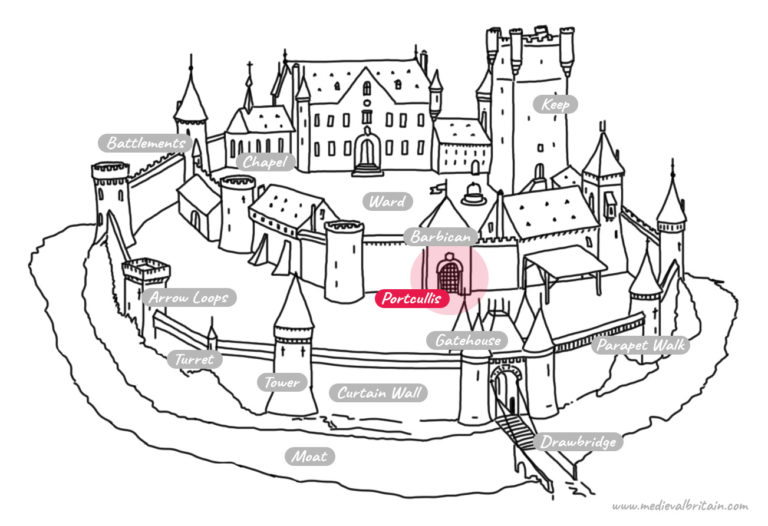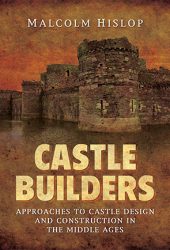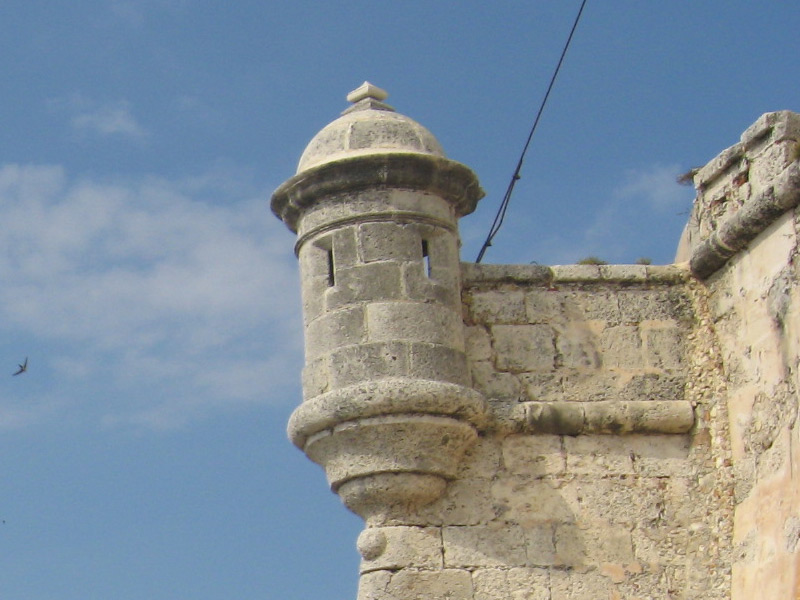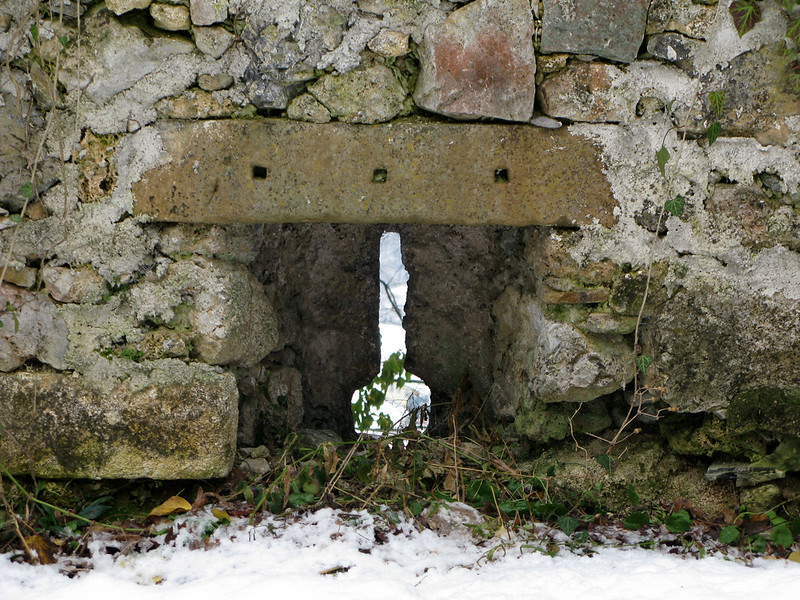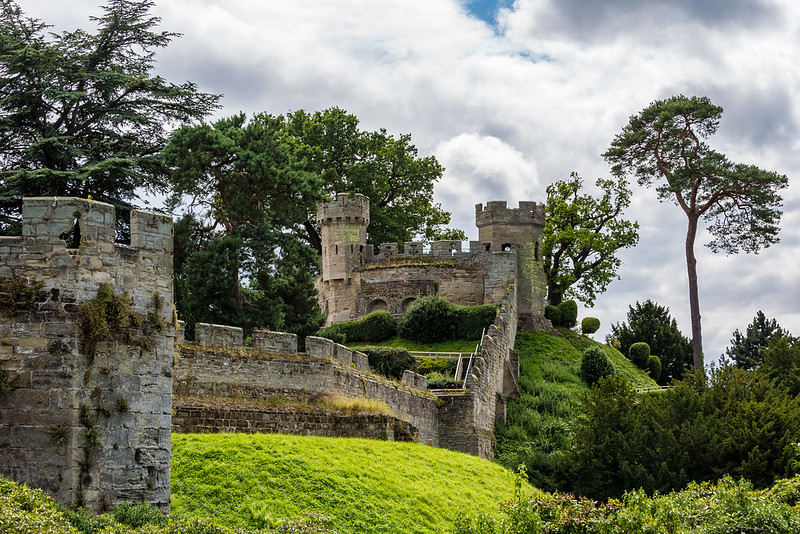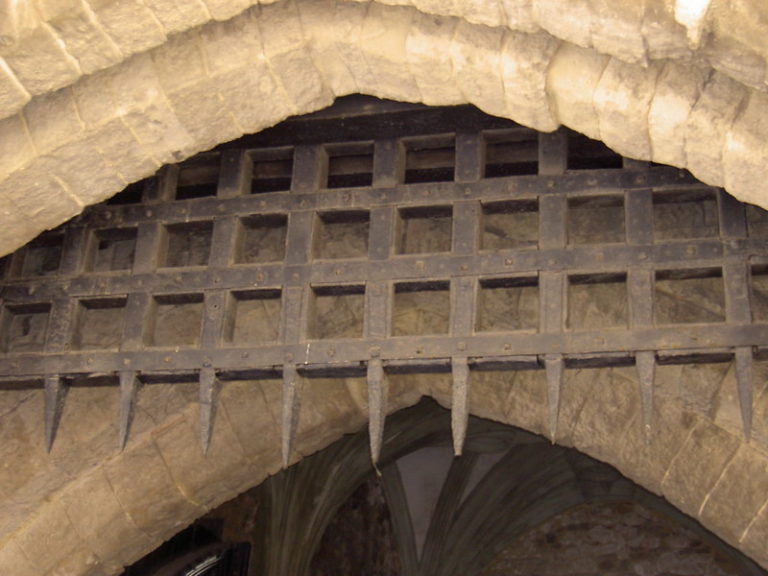
A castle’s portcullis is a fortified entrance made of a combination of metal and strong wood such as oak. Portcullis consisted of a latticed grille and could quickly slide up or down grooves inset in the gateway using ropes or chains.
Portcullises securely closed off the entrance of a castle while under attack or siege. In times of crisis, they could be managed by just one guard. They were an essential defence mechanism, as they allowed the castle to be organized when facing an ambush.
The name Porculis comes from the French “porte coulissante“, which means sliding door.
Quick jump to: Battlements – Chapel – Keep – Ward – Barbican – Arrow Loops – Turret – Tower – Portcullis – Moat – Gatehouse – Curtain Wall – Drawbridge
History of the Portcullis
The portcullis dates back to Roman times and can be first seen around the year 476 AD. In medieval Europe, their design wasn’t incorporated into castles until the 12th century.
Early portcullises were made of strong wood and sometimes plated in metal. Later ones were usually plated in iron. It had spiked ends that could injure attackers when dropped.
The Uses of a Portcullis
Castles usually had two portcullises, one closer to the inside and another farther away.
The presence of these two gates was useful for trapping enemies and attacking them from the castle’s barbican. For example, soldiers could drop hot oil from holes in the ceiling, while archers and crossbowmen could shoot missiles from arrowslits on the sides.
The portcullis had to always be in a state of readiness. The winching mechanism that allowed the portcullis to be raised also helped it get released very quickly by letting go of the ropes and chains.
Castles could have more than one portcullis, depending on their size and when they were built. Castles that were built concentrically had many and could use them strategically to stop and deal with enemies. For example, attackers could be lured inside the gatehouse passageway. Once they were inside, one or more portcullis could be dropped at the same time, trapping them. Defenders could then throw heavy objects, hot liquids and arrows from the gatehouse and the barbican.
